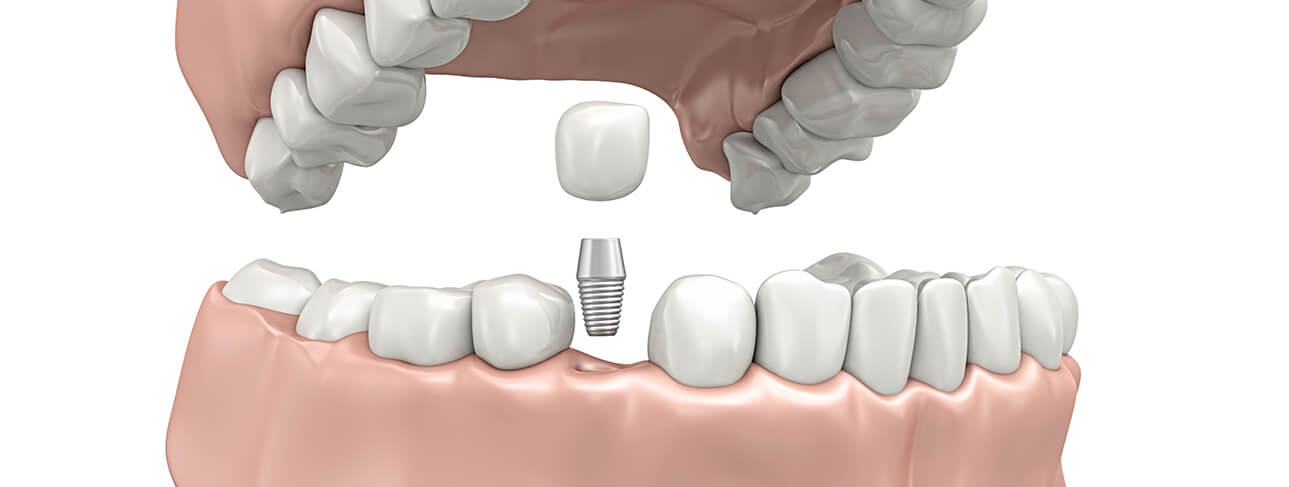
Dental implants are metal posts that are surgically placed in the upper or lower jaw bone to functionally replace the root structure of missing teeth. After a period of healing and integration with the jaw bone, usually 3-4 months, connections may be made to the implant fixtures that will support the eventual crown, bridge, or prosthesis. Implants are composed of medical-grade titanium, with or without surface treatments that help facilitate healing.
Purposes of Dental Implants
Dental implants offer a wide range of restorative options, providing great flexibility and personalization for each patient.
- Single unit crowns are permanently fixed in place to replace a single missing tooth
- Multiple implants may be used to support dental bridges to replace an area of multiple missing teeth
- Dental implants add comfort and stability for patients with dentures
- Multiple implants offer a full set of teeth permanently fixed in place to patients missing all their teeth using long-span bridges or hybrid prostheses and the All-On-4 concept
Advantages of Dental Implants
Dental implants have many distinct advantages over other treatments for missing teeth, traditional treatments using tooth supported bridges, or partial and complete dentures.
- Dental implants provide for a restoration that may be completely fixed in place, as opposed to partial and complete dentures which are removable solutions
- Fixed restorations allow the patient more natural function and aesthetics, whereas removable partial and complete dentures often lack a high level of aesthetics and function
- Dental implants avoid the necessary removal of often perfectly healthy tooth structure that is required to use bridges
Immediate Implants
In some cases, dental implants may be placed during the same appointment when a tooth is extracted. Normally this is reserved for cases where the tooth being removed is free of any infection and the root anatomy is favorable for placement.
Another special scenario may allow for immediate fabrication and placement of a temporary crown (immediate provisionalization). This technique is reserved for very specific cases, and these decisions will be made by Dr. Tomlinson and the patient’s general dentist.
Consultation for Dental Implants
A consultation will allow patients the opportunity to meet with Dr. Tomlinson to discuss all aspects regarding dental implants. Placement of dental implants may be done with either local anesthesia or with IV sedation, depending upon patient preference and upon the complexity of the case. Dr. Tomlinson will discuss this aspect and all other surgical aspects involved with dental implants during your consultation appointment.
